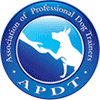“Say Please” Training for Impulse Control and Manners
What is Say Please training?
Say Please is a dog training program that uses the everyday things that your dog likes or wants, to reinforce a behavior such as “sit.” Whenever you’re about to deliver something your dog wants (opening crate door, going outside, coming inside, dinner, throw a toy, getting in the car, getting out of the car, leash on, leash off, pets, etc.), ask him for a “sit” first. Pretty soon your dog will be offering “sits” to ask for what he wants.
Why use it?
Because it’s easy, as long as you’re smarter than your dog (most of the time is OK), because it requires no training equipment, and because it reinforces the behavior you want throughout the day (instead of only when you’re “training” or have treats in your pocket – and your dog knows it!) This is also an excellent program for pups who tend to be overexcited or impulsive, because it offers an opportunity to practice self control many times throughout the day, for short periods of time.
Use it if you have a shy, anxious, or under-confident dog.
We all find our little rituals comforting; your pet is no exception. Anxious dogs feel safer when they can predict “what comes next,” and Say Please is an easy thing for your dog to always expect and rely on. It’s a little routine for you to practice (A follows B which follows C). Over time, it also teaches him a way of asking for what he wants (by sitting), thus empowering him to control his environment, which releases stress and frustration (“please may I have a scratch? Could I come up on the couch with you?” etc.).
Use it if you have a pushy, possessive, or impulsive dog.
You may not realize it, but YOU hold the key to everything your dog wants. Until dogs gain the ability to open cans, scoop kibble, clip leashes on and off of themselves, drive the car, scratch their own bellies, work doorknobs, and throw their own toys, they are going to need a human to help them. That’s where Say Please comes in. Practicing “Say Please” gently and effectively helps your dog look to you for instruction, because he must abide by your rules to get what he wants. Ask your dog to “sit” before you give him what he wants. Once you’ve given the cue, don’t give your dog what he wants until he sits (even for just a second counts, though, in the beginning). If he is unable to perform the sit, don’t give in. Just walk away for 2 minutes, then come back and give him another chance to get it right. Be patient, and be as consistent as possible.
Use it if you have a bored or underemployed dog.
Have a herding dog but no stock? A gun dog but don’t hunt? A terrier, but no vermin to chase? Here you go – an easy, convenient way to work off a little extra mental energy and keep your dog “thinking” throughout the day.
If you don’t feel like carrying the proverbial carrot or stick all the time.
Regardless of your chosen training method, animal training is all about leverage. If you want to get an animal to do something it wasn’t doing naturally, you’re going to need some leverage over them. If you don’t want to carry your treats or toy (or your punisher if you use that – your choke chain, stern voice, correction) or whatever around to get your dog to obey, you can use the environment of “real life” to reinforce what you want your dog to do. Imagine it goes something like this in your dog’s brain: “well … the human has asked me to do something, and usually when she tells me to do something, something REALLY COOL follows, so I’d better do it to see what I get this time!” You are reinforcing good behavior with real-life rewards, meaning that 1) your dog is always ready and willing to listen when you say something and 2) the treat or (imminent punishment) doesn’t need to be present for your dog to obey.
Oh, and once your dog is good at practicing “sit” to get what he wants, start adding in other behaviors, such as “down,” “stay,” “come,” “shake” etc. to keep things fresh!
Try it! It’ll probably take a week or so to get into the swing of things, but once you do it you’ll like it, and so will your dog! Do you need a little help getting started? The Say Please program is one of the cornerstones of our manners training. Contact us for more info!









